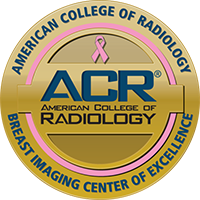Needle Localization
Needle localization is a procedure done prior to a breast biopsy or breast surgery to locate a breast abnormality that can be seen on a mammogram, but cannot be felt. It is also used to verify the location of an already diagnosed breast cancer.
Who performs the procedure?
The procedure is performed by a Radiologist with the assistance of a Technologist.
Why is the procedure performed?
The procedure is performed when there is a mass detected in the breast with a mammogram. A physician and the patient may not want to perform a surgical method to sample to mass, so they will opt to perform this procedure.
Where is this procedure performed?
This procedure is performed in the Breast Center located in the Weinberg Atrium University of Maryland Medical Center 22 South Greene Street, Baltimore, MD 21201.
Is there any prep for this procedure?
You should not wear any perfumes, powder or deodorant on the day of the exam. If you take blood thinners or aspirin, talk to your physician about whether you should discontinue using them prior to the procedure.
What can I expect before the procedure?
Once you arrive at the Breast Center, you will have to register at the front desk. Please have your insurance information ready at this time. After registration, you will be instructed to remove everything from the waist up. Please wear a skirt or slacks to facilitate the change of clothes.
What can I expect during the procedure?
Needle localization is done in the mammogram room before a breast biopsy or breast surgery. By using the mammogram machine or ultrasound, the radiologist is able to decide where to place the needle. Your breast will be cleansed with a cool antiseptic (cleansing) solution. A small amount of local anesthetic may be injected to numb the skin before the needle is placed. Then a thin needle is then inserted into the breast down to the abnormal area. Most women experience some pressure when the locating needle goes in. Another mammogram is taken to check the accuracy of the needle position. The radiologist then removes the thin needle, leaving the thread-like wire hooked in place. The wire will be taped as securely as possible to avoid it being dislodged, but you should be careful with movement of your arm.
How long is the procedure?
Plan to be in the office for one hour.
What can I expect after the procedure?
After the wire is in place, you will be taken to an operating room or a procedure room where a breast biopsy will be done. You will receive either general anesthetic or local freezing for the procedure. Your surgeon will then remove the entire wire with tissue around it for examination. The breast tissue is usually sent to be x-rayed to confirm that the abnormality has been removed. The tissue is sent to a lab where a pathologist carefully examines it. This examination requires several days to be completed. Your doctor will receive the results.
Are there any risks to this procedure?
Guide wires may be dislodged or migrate prior to surgery.
Are there any alternatives to this procedure?
No alternatives are available for this procedure
How do I schedule an appointment?
Please call 410-328-6281 for a Breast Imaging Specialist to schedule your appointment.




